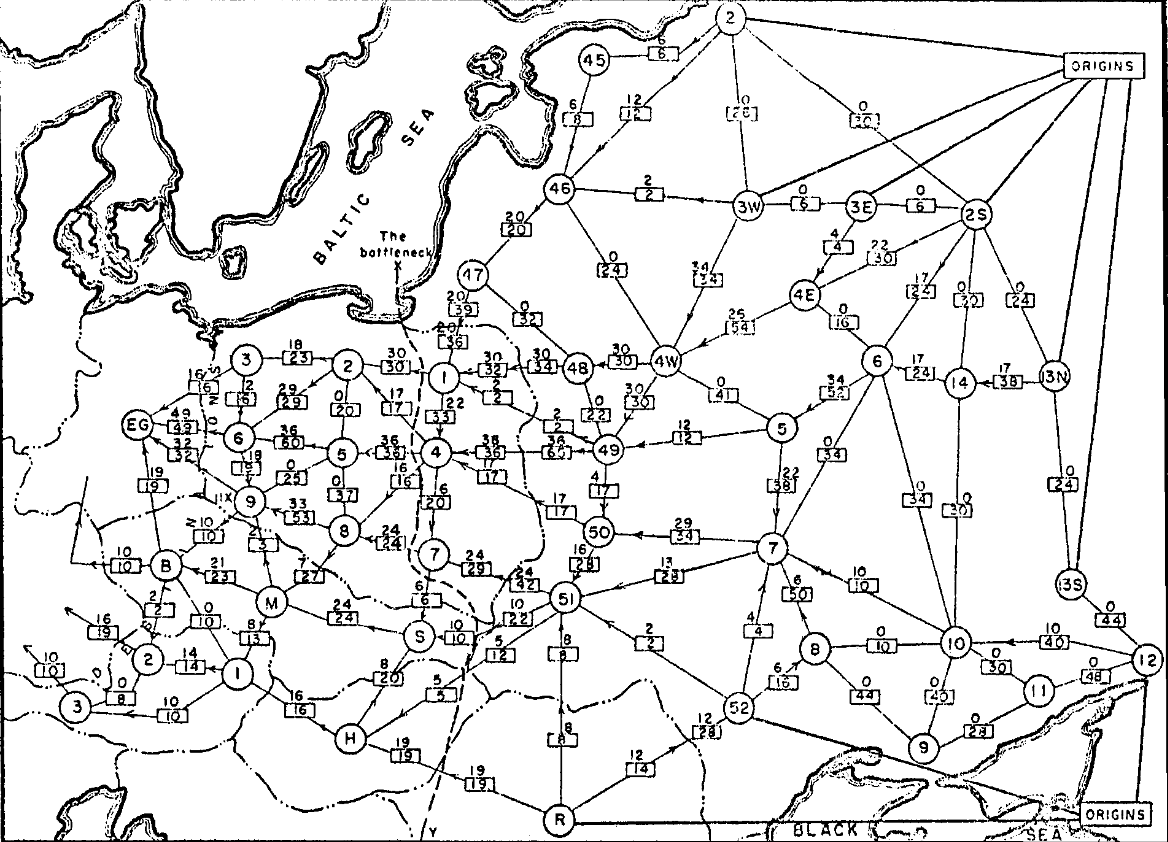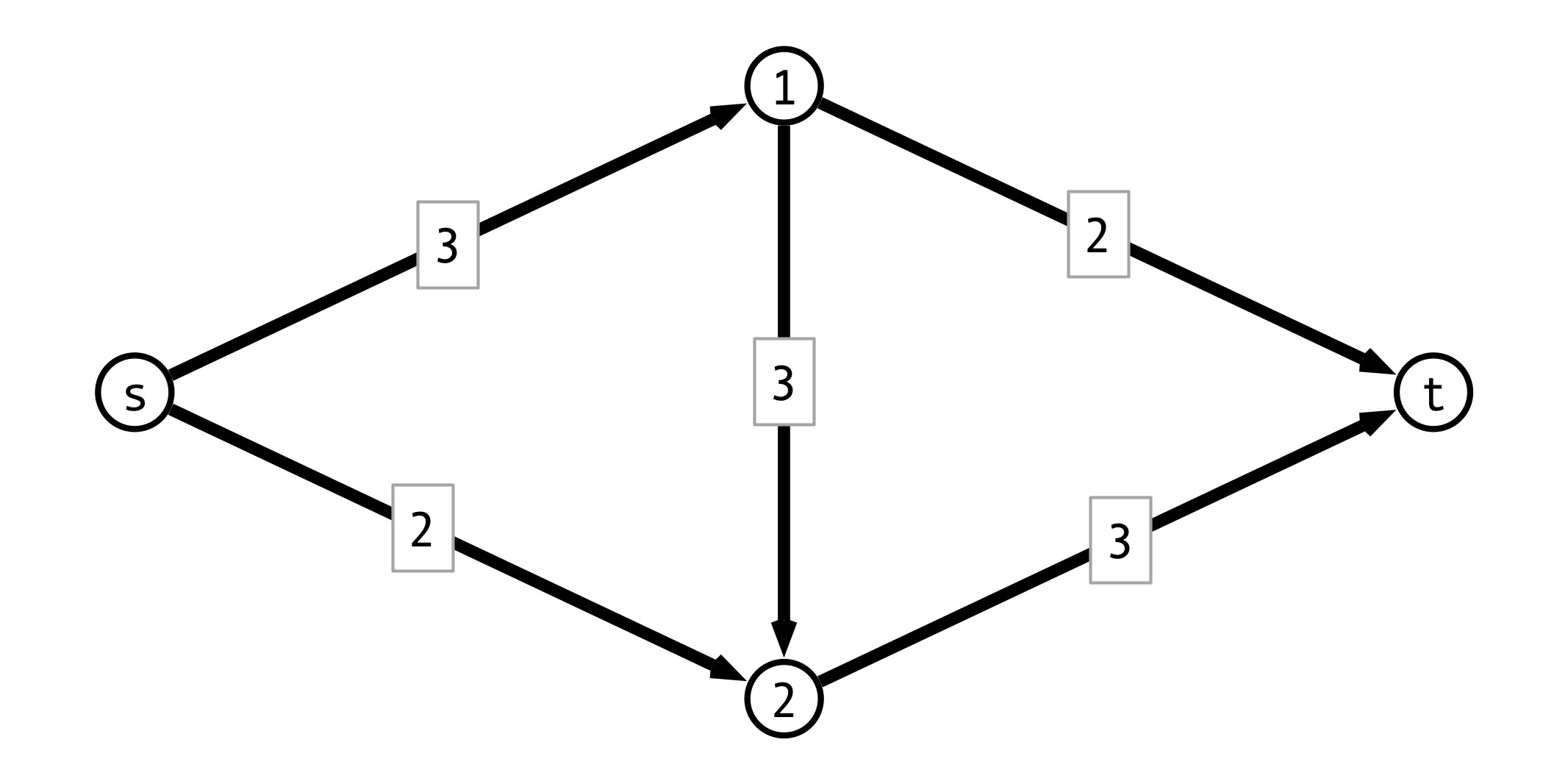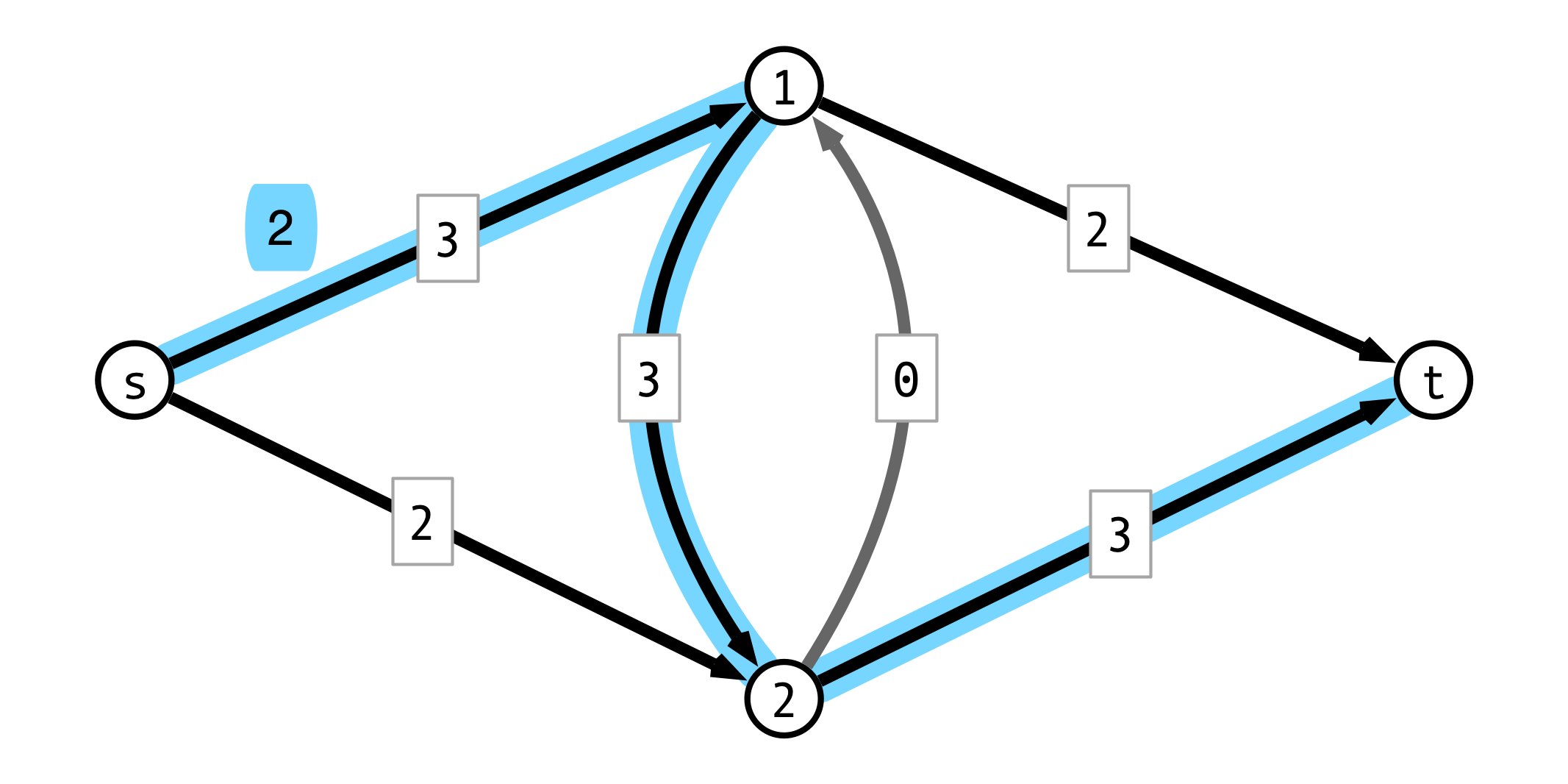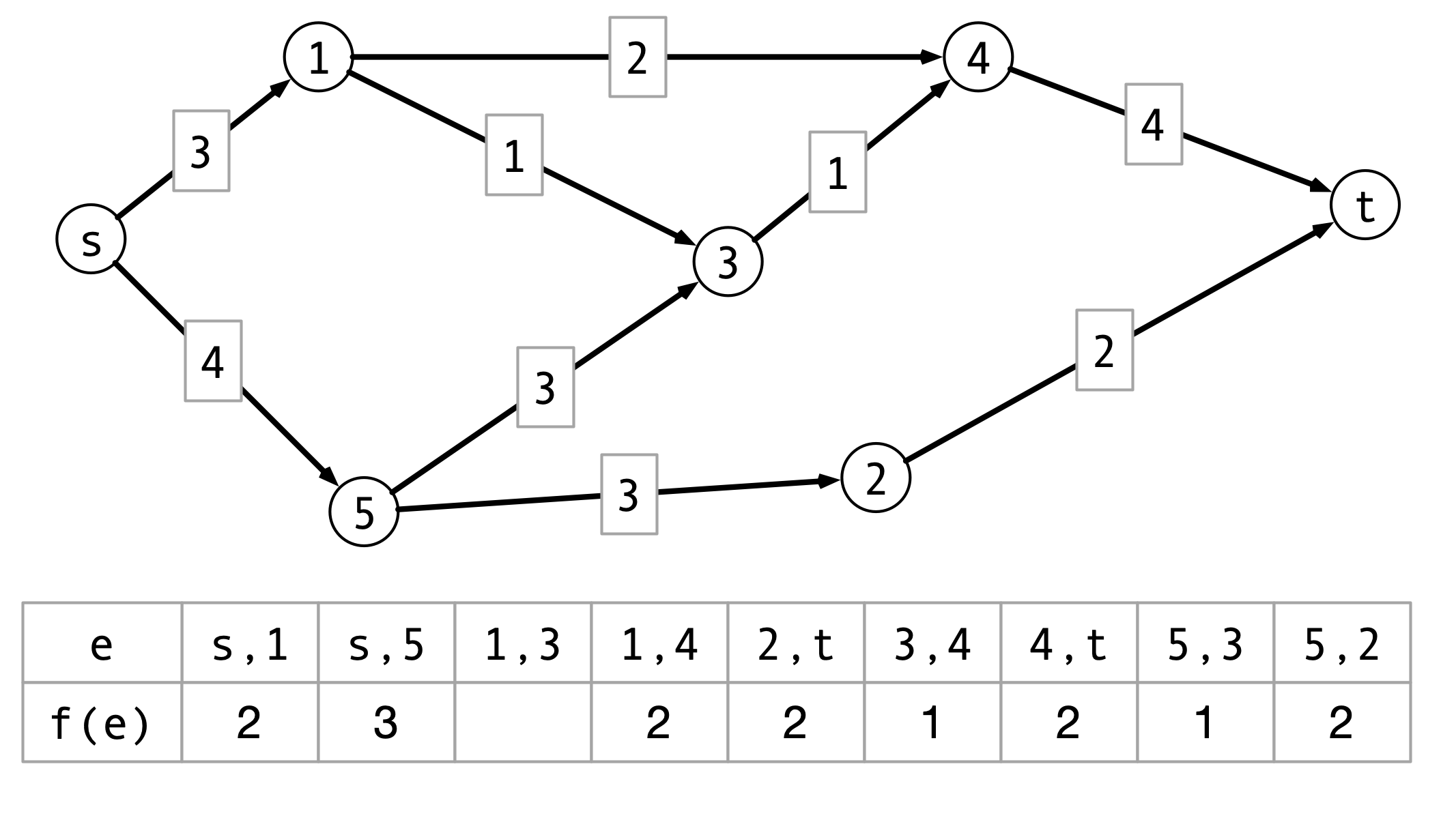Lecture 29: Network Flow II
$ \def\opt{ {\mathrm{opt}} } \def\val{ {\mathrm{val}} } $

COSC 311 Algorithms, Fall 2022
Last Time
Network Flow
A new interpretation of directed graphs:
- network of (directional) pipes
- weights are capacities
- how much fluid can flow through piper per time
- designated source node $s$
- all edges directed away from $s$
- designated sink or destination node $t$
- all edges directed towards $t$
Question. How much fluid be routed from $s$ to $t$ per unit time?
Flows, Formally
Setup.
- $G = (V, E)$ a directed graph, $s, t$ source and sink
- $c(u,v)$ is capacity of edge $(u, v)$
Flows. An s-t flow $f$ is a function $f : E \to \mathbf{R}^+$ satisfying:
- capacity constraints: for each edge $e$, $f(e) \leq c(e)$
-
conservation: for every vertex $v \neq s, t$, flow into $v = $ flow out of $v$:
- $\sum_{x \to v} f(x, v) = \sum_{v \to y} f(v, y)$
The value of the flow $f$ is $\val(f) = \sum_{s \to v} f(s, v)$
Flow Example
Max Flow Problem
Input.
- weighted directed graph $G = (V, E)$
- weights = edge capacities $> 0$
- source $s$, sink $t$
- all edges oriented out of $s$
- all edges oriented into $t$
Output.
- flow $f$ of maximum value
- $\val(f) = \sum_{s \to v} f(s, v)$
A Simple Greedy Strategy
Repeat until done:
- find an “unsaturated” path $P$ from $s$ to $t$
- find minimum (remaining) capacity $b$ along $P$
- route $b$ units of flow along $P$
Greedy Approach Example

Choosing Different First Path

Greedy Issue
Flow along $P$ may block other viable paths
Question. How to fix this?
Augmenting Paths
Idea. Add “undo” feature for each edge
-
if $f$ routes $f(u, v) \leq c(u, v)$ flow from $u$ to $v$, add reverse edge $(v, u)$ with capacity $c(v, u) = f(u, v)$
-
using $(v, u)$ corresponds to “pushing back” flow from $(u, v)$
-
if an alternate route for this flow can be found, then more flow can be routed through $u$
Pushing Back Example

The Residual Graph
- $G = (V, E)$ original graph
- $f$ a flow on $G$
Residual graph $G_f = (V_f, E_f)$
- vertex set $V_f = V$
- for each $(u, v) \in E$, add $(v, u)$ to $E_f$
- $(u, v)$ is forward edge
- $(v, u)$ is backward edge
- in $G_f$ capacity of $(u, v)$ is:
- $c(u, v) - f(u, v)$ if $(u, v) \in E$ (forward edge)
- $f(v, u)$ if $(v, u) \in E$ (backward edge)
Residual Graph Example

Ford-Fulkerson Algorithm
Very high level
- Initialize residual graph, flow $f$
- While there is a path from $s$ to $t$ in residual graph do:
- find path $P$ from $s$ to $t$
- ignore edges with capacity $0$
- $b \leftarrow$ minimum capacity along $P$
- augment flow $f$ by $b$ along $P$
- update residual graph
- find path $P$ from $s$ to $t$
- return $f$
Questions
How do we…
-
find a path $P$ from $s$ to $t$?
-
update flow $f$?
-
update residual graph $G_f$?
Example
Formalizing Ford-Fulkerson
MaxFlow(G, s, t):
Gf <- G
f <- zero flow
P <- FindPath(Gf, s, t)
while P is not null do:
b <- min capacity of any edge in P
Augment(Gf, f, P, b)
P <- FindPath(Gf, s, t)
endwhile
return f
Augment Procedure
Augment(Gf, f, P, b):
for each edge (u, v) in P
if (u, v) is forward edge then
f(u, v) <- f(u, v) + b
c(u, v) <- c(u, v) - b
c(v, u) <- c(v, u) + b
else
f(v, u) <- f(v, u) - b
c(v, u) <- c(v, u) + b
c(u, v) <- c(u, v) - b
Running Time
Assume:
- all capacities are integers
- $C = $ sum of capacites of edges out of $s$
Observe:
-
How long to find augmenting path $P$?
-
How long to run
Augment? -
How many iteraions of find/augment?
Conclude: Overall running time?
Optimality of Flow?
Question. How do we know this flow is optimal?

Next Time
Ford-Fulkerson Correctness:
- Maximum Flow = Minimum Cut